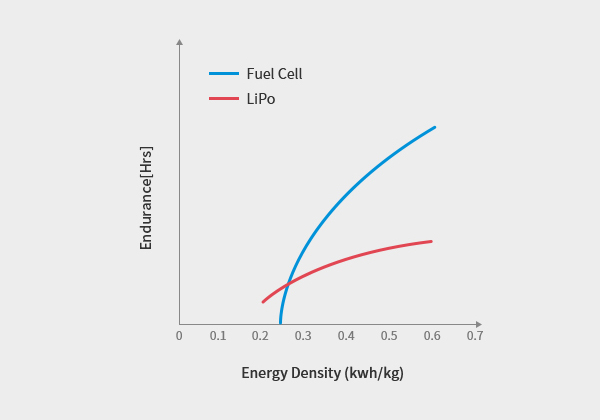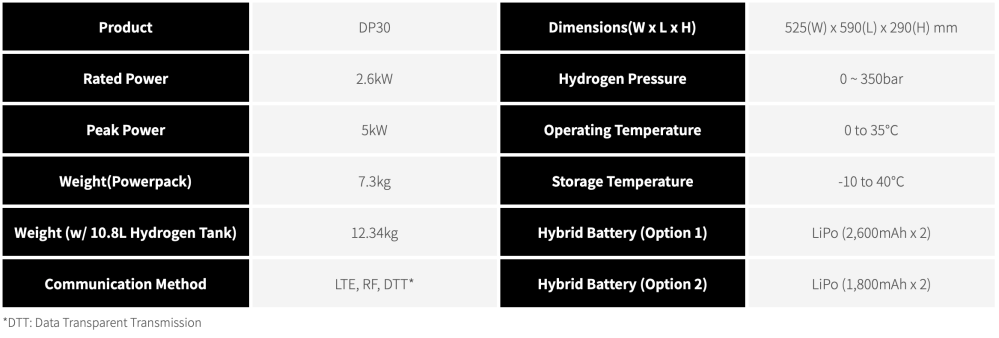A South Korean company says its fuel cell technology provides enough energy to sustain two-hour drone flights. And it says it’s already made flights to prove it.
Battery technology holds great promise – and great limitations – for drones. The energy density of internal combustion fuels is far greater than for batteries, meaning one pound of kerosene will get you a lot farther than a battery of the equivalent weight. But manufacturers of drones, along with the people who use them, are always looking for the next big breakthrough: An electric drone that can fly substantially longer missions than current battery technology would allow.
And that’s where fuel cell technology could play a key role.
What are fuel cells?
At its simplest, a fuel cell uses chemical energy to cleanly and efficiently create electrical energy. Perhaps the best-known model uses hydrogen, creating byproducts of heat and water vapor. They’re suitable, according to this US government website, for everything from small products like laptops right up to large-scale power generation.
But what about drones? Well, a South Korean firm has announced that it has produced a fuel-cell power pack that could keep an electric drone in the air for more than two hours.
South Korean company pushes the envelope
The company, called Doosan Mobility Innovation, says its new fuel cell powerpack has an energy density much greater than a standard LiPo battery:

The Powerpack
The DP30 powerpack, says the company, can provide enough energy for more than two hours of flight time, with a charging time of less than 10 minutes.

The company’s website also explains, technically, that it made some breakthroughs to reduce the powerpack’s weight:
For bipolar plates, which take up the largest portion of the stack’s weight, we applied ultrathin metal developed with our proprietary technology and successfully reduced the total weight. A key material used in the stack is MEA (Membrane Electrode Assembly). This enables high energy output and durability for our fuel cell Powerpack. And thanks to the design of the stack structure, which maintains even energy output among cells, high energy output of the fuel cell Powerpack remains stable during flight.
Use-case scenarios
The DP30 has to be integrated onto your existing drone, and it’s not going to be pocket change (the price is not listed on Doosan’s website). It’s also relatively large. So we’d anticipate this would only be used for Enterprise/Industrial applications. Think long-range surveillance or delivery, using a larger drone.
How large? Well, just look at the specs.

The powerpack, when coupled with a hydrogen tank, weighs more than 27 pounds.
You get a better sense of the system in this company video:
Being able to fly a relatively large drone for more than two hours is no small feat. We look forward to seeing where fuel-cell technology takes drones in the years to come.
FTC: We use income earning auto affiliate links. More.

Subscribe to DroneDJ on YouTube for exclusive videos
"fuel" - Google News
January 21, 2021 at 09:53PM
https://ift.tt/396cH72
Hydrogen fuel cell offers drones up to two-hour flights - DroneDJ
"fuel" - Google News
https://ift.tt/2WjmVcZ
Bagikan Berita Ini















0 Response to "Hydrogen fuel cell offers drones up to two-hour flights - DroneDJ"
Post a Comment